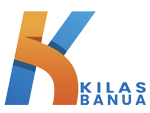Bahasa Daerah Kalimantan Selatan: Preserving a Cultural Heritage
Introduction
Bahasa Daerah Kalimantan Selatan, also known as the regional language of South Kalimantan, is a language spoken by the indigenous people of the Indonesian island of Borneo. The language, which is one of the Austronesian languages, is unique and diverse due to its geographical, cultural, and historical background.
In this article, we will explore the linguistic and cultural aspects of Bahasa Daerah Kalimantan Selatan, its origins, its current status, and its impact on the South Kalimantan society. We will also answer some frequently asked questions about the language.
Linguistic Aspects of Bahasa Daerah Kalimantan Selatan
The language is spoken by the Banjar people, who are the majority of the population in South Kalimantan. It is also spoken in some areas of the neighboring provinces of Central Kalimantan and East Kalimantan.
Bahasa Daerah Kalimantan Selatan is closely related to other Austronesian languages, such as Javanese, Balinese, and Sundanese. However, it has its unique dialects and expressions influenced by the local culture, environment, and history. The dialects include Batanghari, Bukit, Hulu Sungai, Martapura, and Banjarese.
The language has a distinct phonology, with its own set of consonants and vowels. It also uses various glottal sounds, such as the ‘ng’ sound in the word ‘ngajung’ (invite). Bahasa Daerah Kalimantan Selatan has a rich vocabulary, with many words and expressions unique to the language.
Cultural Aspects of Bahasa Daerah Kalimantan Selatan
The Banjar people have a rich cultural heritage, and Bahasa Daerah Kalimantan Selatan plays a significant role in preserving and promoting it. The language reflects the Banjar’s traditions, beliefs, values, and way of life.
For example, the language has unique terms for traditional houses, such as ‘lamin’ for a rice storage barn and ‘balai laki’ and ‘balai bini’ for the men’s and women’s sitting rooms, respectively. It also has various terms and expressions related to traditional ceremonies, such as ‘ngalap berkat’ (seeking blessings) and ‘masuk islam’ (conversion to Islam).
Bahasa Daerah Kalimantan Selatan also reflects the Banjar people’s daily activities, such as farming, fishing, and trading. It has many words and expressions related to these fields, such as ‘ambawang’ (paddy field) and ‘pasar basar’ (big market).
Origins of Bahasa Daerah Kalimantan Selatan
The origins of Bahasa Daerah Kalimantan Selatan can be traced back to the ancient kingdom of Tanjungpura, which ruled over the southern and central areas of Borneo from the 14th to the 15th century. The kingdom was known for its maritime and trading activities, which had a significant impact on the region’s culture and language.
The language evolved over time due to various factors, such as migration, intermarriage, and contact with other cultures. The Banjar people, who are the main speakers of the language, are believed to have migrated to South Kalimantan from the southern part of Sumatra in the 14th century. They brought with them their language, culture, and traditions, which gradually blended with the local culture and language.
During the colonial era, Bahasa Daerah Kalimantan Selatan was marginalized and stigmatized as a ‘low’ language compared to the ‘high’ language of Indonesian. The colonial government and the missionaries imposed the use of Indonesian as the official and educational language, which led to a decline in the use and prestige of Bahasa Daerah Kalimantan Selatan.
However, since Indonesia’s independence in 1945, there has been a growing recognition and appreciation of the regional languages and cultures. The government has implemented policies to promote and preserve the regional languages, including Bahasa Daerah Kalimantan Selatan.
Current Status and Impact of Bahasa Daerah Kalimantan Selatan
Today, Bahasa Daerah Kalimantan Selatan is still widely spoken in South Kalimantan, although its use is declining among the younger generations. According to the 2010 Indonesian Census, there were 3.3 million Banjar speakers in South Kalimantan, accounting for 74% of the province’s population.
The language is used in various domains of daily life, such as home, market, and community events. It is also used in some formal and informal education, media, and literature.
However, Bahasa Daerah Kalimantan Selatan still faces some challenges in preserving and promoting its use and status. One of the challenges is the influence of Indonesian and English, which are seen as more prestigious and modern languages. Many young Banjar people prefer to speak Indonesian and English, especially in formal and professional contexts.
Another challenge is the lack of resources and recognition for the language. There are few teaching materials, dictionaries, and media in Bahasa Daerah Kalimantan Selatan, which limit its use and development. The language also faces prejudice and stereotypes from some non-Banjar communities and individuals.
Despite these challenges, Bahasa Daerah Kalimantan Selatan remains a vital and dynamic language that reflects the Banjar cultural heritage. It is a symbol of the Banjar people’s identity, pride, and resilience in preserving their language and culture in a rapidly changing world.
FAQs
Q: What is the difference between Bahasa Daerah Kalimantan Selatan and Indonesian?
A: Bahasa Daerah Kalimantan Selatan is a regional language spoken by the Banjar people in South Kalimantan, while Indonesian is the national and official language of Indonesia. Bahasa Daerah Kalimantan Selatan has its unique dialects, vocabulary, and expressions influenced by the local culture and history.
Q: Is Bahasa Daerah Kalimantan Selatan related to any other languages?
A: Yes, Bahasa Daerah Kalimantan Selatan is part of the Austronesian language family, which includes Javanese, Balinese, and Sundanese.
Q: How is Bahasa Daerah Kalimantan Selatan used in daily life?
A: Bahasa Daerah Kalimantan Selatan is used in various domains of daily life, such as home, market, and community events. It is also used in some formal and informal education, media, and literature.
Q: What are the challenges facing Bahasa Daerah Kalimantan Selatan?
A: Bahasa Daerah Kalimantan Selatan faces challenges in preserving and promoting its use and status, including the influence of more prestigious and modern languages, such as Indonesian and English, and the lack of resources and recognition for the language. It also faces prejudice and stereotypes from some non-Banjar communities and individuals.
